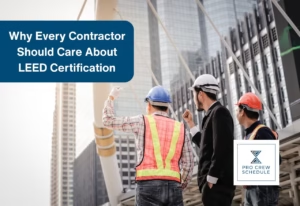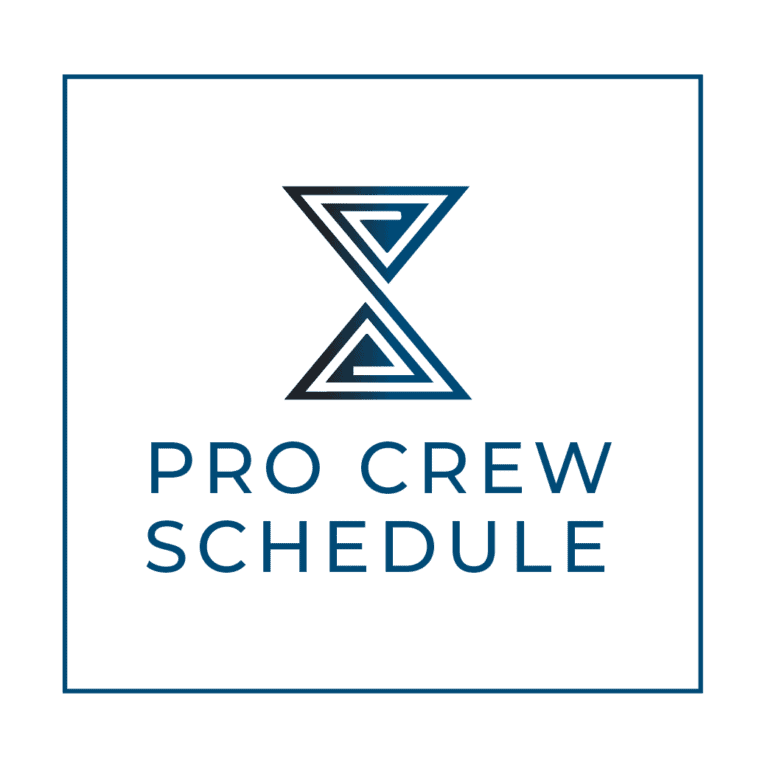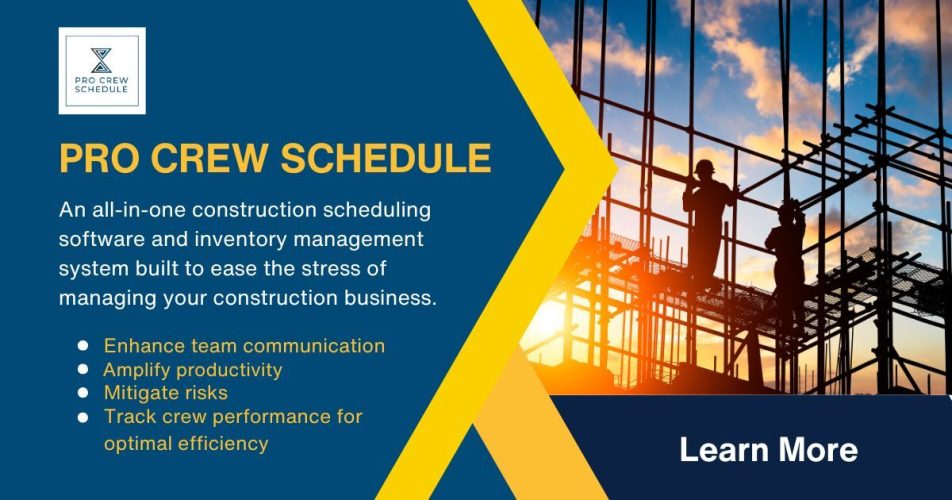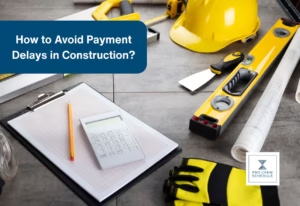Sustainability has emerged as a key component in modern building projects within the last decade. In addition to developing structures, today’s contractors and project managers are also thinking about better communities and healthier environments when building projects. Because of this, it is more crucial than ever for your business to understand sustainability frameworks like LEED certification.
Adopting green standards can improve your professional reputation, whether you’re overseeing major developments or remodeling an old building. Additionally, you would be able to reduce long-term expenses and attract clients who appreciate environmental responsibility, particularly in light of the escalating climate change.
In today’s article, let’s break down what LEED certification is, why it matters, and how project management tools can make it easier for your team to stay on track with your sustainability goals moving forward.
What Is LEED Certification?
LEED or Leadership in Energy and Environmental Design is a globally recognized and respected rating system developed by the U.S. Green Building Council (USGBC). It provides a solid framework for designing, constructing, operating, and maintaining buildings that are focused on Health and Wellness (H+W).
Instead of being a single checklist, LEED evaluates multiple performance areas that include the following:
- Energy and water efficiency
- Waste reduction
- Sustainable material use
- Indoor air quality
- Site selection and transportation impact
Construction projects are awarded certain points for meeting certain sustainability benchmarks. The more points you earn, the higher your LEED certification level will be:
- Certified (40–49 points)
- Silver (50–59 points)
- Gold (60–79 points)
- Platinum (80+ points)
LEED’s certification parameters are very flexible. Whether you’re working on a commercial tower, residential community, or urban development, LEED offers guidelines that adapt to the project type and scale.
Why LEED Certification Matters in Construction
LEED certification isn’t just a badge of honor; it’s a competitive advantage in an industry where waste production is at an all-time high. It demonstrates that your company is serious about environmental stewardship and long-term sustainability, which is very rare in the construction world.
By following LEED guidelines, construction teams can:
- Decrease energy and water costs
- Improve indoor environmental quality
- Reduce waste during and after construction activities
- Protect local ecosystems and communities
- Increase building value and marketability in the market
For many clients, sustainability is now one of the qualities they look for when choosing a contractor or developer. LEED-certified projects are sustainable and also attract investors and tenants who prioritize green living.
Plus, when paired with modern construction scheduling software, following the step-by-step LEED guidelines becomes easier to track and manage. With automated task tracking and documentation management, teams can stay on track with sustainability standards while keeping the project on schedule.
LEED Rating Categories
LEED covers several categories to cover different construction types and purposes:
- Building Design and Construction (BD+C): For new buildings and major renovation projects
- Interior Design and Construction (ID+C): For interior spaces and tenant spaces improvements
- Building Operations and Maintenance (O+M): For existing structures needing upgrades and general maintenance
- Neighborhood Development (ND): For community-scale projects and general land development
- Cities and Communities: For large-scale urban and estate sustainability planning
- Residential: For single-family homes and multifamily household developments
No matter which category your project falls under, the focus for LEED certification remains the same: to reduce environmental impact, support community health, and promote smarter resource (material and labor) use for a greener future.
Steps to Getting Your Project LEED Certified
Earning LEED certification may sound complicated at first, but with good planning, teamwork, and the right technology, it can be achieved. Here’s a step-by-step guide to help your project get that certification soon:
Select the Right LEED Rating System
Your LEED journey starts by identifying which LEED rating system best fits your project. LEED offers several systems tailored to different types of construction, which you can choose from. For instance, if you’re working on a high-rise commercial project, you’ll likely fall under the Building Design and Construction (BD+C) category.
Choosing the correct system early on saves you from unnecessary revisions later in the process. Many project teams use a construction management system at this stage to map out timelines, set sustainability milestones, and assign responsibilities right from the planning phase for more efficient execution.
Hold a Charrette
A charrette is a collaborative workshop that sets the foundation for your project’s sustainability goals. Think of it as your project’s kickoff meeting with all the stakeholders, but solely focused on the environmental aspect.
During the charrette, teams create a preliminary LEED scorecard where they identify which credits are achievable and finalize an action plan for the next steps. Documenting these discussions ensures everyone is accountable and that tasks are tracked moving forward.
Register Your Project
Registration with the U.S. Green Building Council (USGBC) officially starts your LEED journey. Through LEED Online, your team can access different resources, templates, and submission forms that fit your project.
Registering as early as the conceptual design phase allows you to align design and construction phases with LEED requirements from the get-go. Use digital dashboards to track progress, manage document submissions, and ensure you’re hitting key sustainability checkpoints on schedule.
Assign Roles and Responsibilities
A well-organized project depends on clear leadership and delegation of tasks. Designate a Project Administrator to manage LEED submissions, delegate tasks, and coordinate communications with the USGBC.
This is where construction crew management tools become especially highly valuable. They centralize team assignments, track workforce activity, and keep everyone updated. This minimizes confusion and ensures your sustainability efforts don’t fall through the cracks as you go.
Confirm Prerequisites
Before you can earn LEED points, your project must meet certain minimum program requirements (MPRs) first. These prerequisites are non-negotiable and always ensure that every LEED certified building meets a minimum environmental responsibility.
Construction often uses cloud-based documentation platforms linked to their construction scheduling software to store prerequisite checklists and proofs. This ensures that nothing is missed during audits or reviews at the end of the project.
Earn Credits
Once prerequisites are satisfied, your team can start earning credits. These represent voluntary sustainability goals across categories such as energy optimization, water efficiency, and waste reduction.
Each credit is worth a specific number of points, so strategize which ones to pursue based on your project’s scope and resources.
Complete the Application
After collecting all documentation, it’s time to compile your LEED application. This includes drawings, technical reports, materials data, photographs, and credit templates.
LEED Online serves as the main portal for uploads and submissions. Accuracy is key here — incomplete files can delay certification. Assign a quality-check reviewer within your team to verify that every document is complete and properly formatted.
Consider keeping a version-controlled archive within your digital workspace to avoid confusion over the latest file updates. A single misstep in documentation can cost valuable time, so organized project management tools are a must.
Review the Application
Before submitting, conduct an internal audit. Check each credit narrative and prerequisite document against LEED requirements. Have multiple team members review the application to catch inconsistencies or missing data.
Some firms even schedule a formal pre-submission review meeting, where each department confirms its section is complete. This is a perfect time to update your team’s progress in your construction crew management platform — making sure everyone’s responsibilities have been met before submission.
Pay Certification Fees
The LEED certification fee depends on the size and type of project. It covers the cost of review and evaluation by the USGBC.
Include these fees in your initial budget so they don’t catch your team off guard. When clients understand these costs upfront, it’s easier to align financial expectations and demonstrate the long-term value of certification in operational savings.
Undergo the Project Review
Once submitted, your project enters the review phase. USGBC reviewers will evaluate each credit and prerequisite based on your documentation.
You can opt for two types of review:
- Split Review: Design and construction evaluated separately.
- Combined Review: Design and construction are assessed together after project completion.
Expect some back-and-forth communication — reviewers may request clarifications or additional proof. Keep all correspondence organized within your folder to avoid version confusion.
If certain credits are denied, you can appeal the decision with supplemental documentation. Staying responsive and organized will help you resolve issues faster.
Get Certified
After final review, your project receives its official LEED rating — Certified, Silver, Gold, or Platinum — based on the total points achieved.
Celebrate your achievement! Displaying your LEED plaque not only boosts your company’s reputation but also proves to clients that you’re committed to sustainable practices.
More importantly, continue to apply what you’ve learned. LEED certification shouldn’t be a one-time accomplishment — it’s a mindset. Keep using the same tools and systems that helped you succeed, from digital documentation to efficient scheduling and team coordination. Over time, this approach creates a culture of continuous improvement within your company.
How to Keep Your Project on Track
Maintaining LEED standards throughout a project requires tight coordination and meticulous record-keeping. That’s where digital tools come in handy.
Using construction scheduling software allows teams to monitor tasks, timelines, and documentation in real time. Combined with mobile reporting and photo documentation, it helps ensure every sustainability goal is met efficiently.
At Pro Crew Schedule, we help construction professionals simplify this process. Our platform streamlines reporting, task management, and documentation — making it easier for your team to stay organized and compliant from day one.
Together, we can build a more sustainable future, one project at a time.







